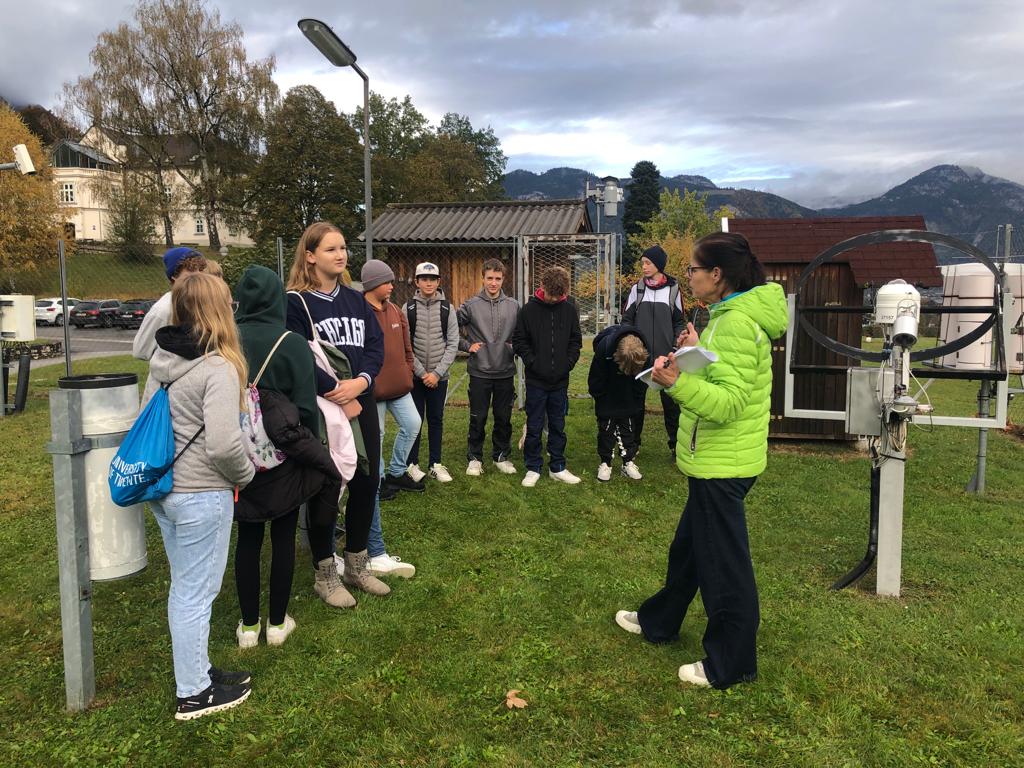The tour across the research fields of the HBLFA Raumberg-Gumpenstein provided an insight into the complex topic and time for explanations using concrete examples. Over the course of Earth's history, our region has also changed climatically very often (from the sea to the glacier). Silent witnesses are sometimes still clearly visible in the landscape. In addition to the change in habitats with their range of species, climate change also influences economic practices.
The starting point of the tour was the weather station with the measuring instruments and a comparison of the measured values from our GeoSphere Austria weather station over the past few days with very pronounced phenomena between October 20th and 21st. Austria's 4 climate zones. Phenological data, ie the seasonal cycle of plants (bud, flower, leaf, fruit setting, fruit ripening, leaf coloring, leaf fall) and animals (including bird migration, breeding period) have been collected in Gumpenstein for many decades.
The data also helps land managers to coordinate their work accordingly. Water, soil and air are among the most important natural resources. In the soil-water root swing cellar, the students observed the root structure and water absorption capacity of agricultural crops using different types of soil as well as the attachment of the plants to their location. Particular emphasis was also placed on heat stress in farm animals and adaptation options to minimize stress through shaded areas, water availability, adjusted grazing times throughout the day, installations in the stables (water sprinklers, misters, ventilation, cool pads and fans).
The animals also adapt or, if possible, flee to shady places when it is hot. Sheep, for example, duck their heads under the bellies of their fellow animals when outdoors, birds flee into the forest or under eaves. Climate change can be favorable or unfavorable for birds. Ptarmigan and stoats lose their camouflage in winter, the overwintering blackbirds can breed more often, and the corncrake has to look for new meadow areas when mowing early in order to be able to breed.
The newly built vineyard by the Grassland Institute and the tomato plantation by Lebenshilfe Ennstal (horticultural project) are interesting. Research is being carried out into whether robust species can adapt to our weather conditions and whether yields are also possible in the Alpine climate zone. The topics on pests such as invasions of locusts from the 14th to the 18th. Century in South and North Tyrol due to climate change and the increase in natural disasters were discussed using examples. At the end, the students explained in groups the climate relevance of forms of land use and evaluated the connections between land use activities and their protective effects according to the traffic light principle. Sounds complex, but it enables a precise look at current and future scenarios as well as solutions for adaptation.









